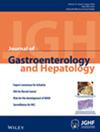Celiac disease care differs significantly between high- and low-middle-income countries: a global survey of celiac experts from 63 countries
Abstract
Background and Aim
Celiac disease (CeD) is increasingly diagnosed but significant disparities exist in awareness, practices, resources, and legislation worldwide. We conducted a global online survey with CeD experts to assess this disparity internationally.
Methods
A 55 questions survey encompassing nine domains relevant to CeD care (awareness, gluten-free [GF] foods availability/cost/quality, GF labeling, CeD dietician availability, insurance for CeD patients, medical training, research funding, patient support groups, and unmet needs) was generated and sent to CeD experts worldwide electronically. Countries were stratified based on per capita income as high-income (HIC) and lower-income countries (LIC) (including upper-middle-, lower-middle-, and low-income countries). Survey responses were summarized as a single score using principal component analysis.
Results
Valid responses were obtained from 131(37.4%) [HIC: 71; LIC: 60] of contacted CeD experts from 63 countries. Compared with HIC, LIC experts perceived worse availability (HIC:80% vs LIC: 47%; P < 0.001), quality (52% vs 20%; P < 0.001), and legislation for labeling of GF foods (82% vs 37%; P < 0.001), with unfavorable reimbursement policies (27% vs 12%; P = 0.002), subsidies (32% vs 13%; P < 0.001), and insurance (76% vs 43%; P < 0.001) for CeD patients. LIC also lacked awareness about CeD among general physicians (69% vs 32%; P < 0.001), trained celiac dieticians (39% vs 12%; P = 0.002), and active CeD patient support groups (93% vs 50%; P < 0.001). All experts believed that GF foods were costly (94% vs 87%), frequently contaminated (27% vs 32%), and unfavorably taxed (97% and 93%). The experts agreed on key unmet needs and better research funding. Overall CeD preparedness score (median 58.3 vs 33.0; P < 0.001) was also associated with income.
Conclusions
The present survey highlights the opinion of global experts on the challenges, opportunities, and preparedness related to CeD and differences worldwide by income.

 求助内容:
求助内容: 应助结果提醒方式:
应助结果提醒方式:


